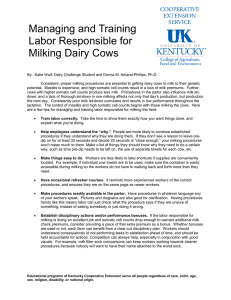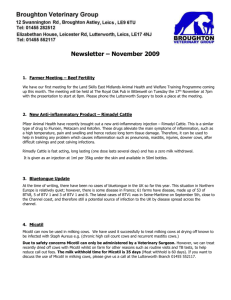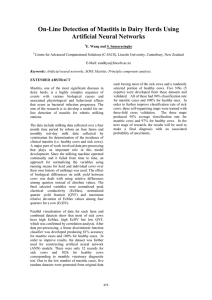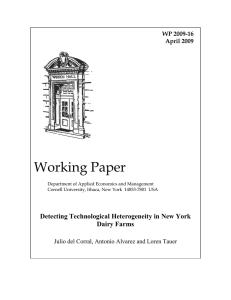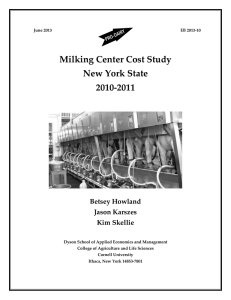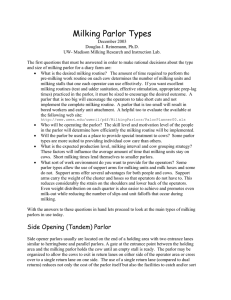Management Practices Associated with Milk Quality
advertisement
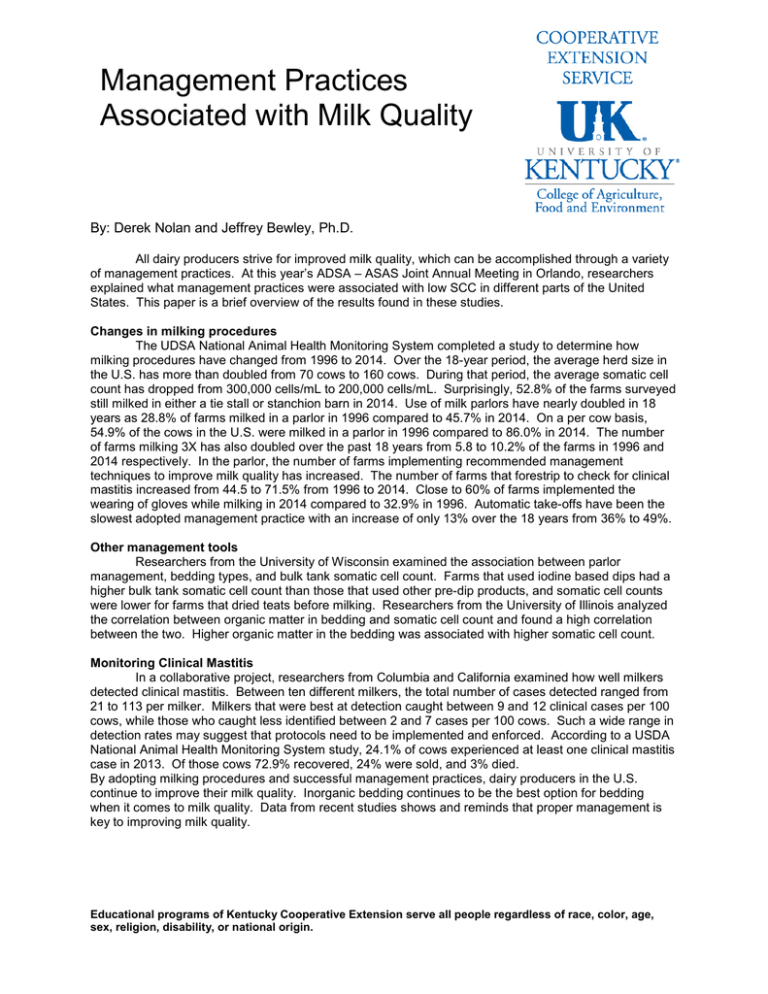
Management Practices Associated with Milk Quality By: Derek Nolan and Jeffrey Bewley, Ph.D. All dairy producers strive for improved milk quality, which can be accomplished through a variety of management practices. At this year’s ADSA – ASAS Joint Annual Meeting in Orlando, researchers explained what management practices were associated with low SCC in different parts of the United States. This paper is a brief overview of the results found in these studies. Changes in milking procedures The UDSA National Animal Health Monitoring System completed a study to determine how milking procedures have changed from 1996 to 2014. Over the 18-year period, the average herd size in the U.S. has more than doubled from 70 cows to 160 cows. During that period, the average somatic cell count has dropped from 300,000 cells/mL to 200,000 cells/mL. Surprisingly, 52.8% of the farms surveyed still milked in either a tie stall or stanchion barn in 2014. Use of milk parlors have nearly doubled in 18 years as 28.8% of farms milked in a parlor in 1996 compared to 45.7% in 2014. On a per cow basis, 54.9% of the cows in the U.S. were milked in a parlor in 1996 compared to 86.0% in 2014. The number of farms milking 3X has also doubled over the past 18 years from 5.8 to 10.2% of the farms in 1996 and 2014 respectively. In the parlor, the number of farms implementing recommended management techniques to improve milk quality has increased. The number of farms that forestrip to check for clinical mastitis increased from 44.5 to 71.5% from 1996 to 2014. Close to 60% of farms implemented the wearing of gloves while milking in 2014 compared to 32.9% in 1996. Automatic take-offs have been the slowest adopted management practice with an increase of only 13% over the 18 years from 36% to 49%. Other management tools Researchers from the University of Wisconsin examined the association between parlor management, bedding types, and bulk tank somatic cell count. Farms that used iodine based dips had a higher bulk tank somatic cell count than those that used other pre-dip products, and somatic cell counts were lower for farms that dried teats before milking. Researchers from the University of Illinois analyzed the correlation between organic matter in bedding and somatic cell count and found a high correlation between the two. Higher organic matter in the bedding was associated with higher somatic cell count. Monitoring Clinical Mastitis In a collaborative project, researchers from Columbia and California examined how well milkers detected clinical mastitis. Between ten different milkers, the total number of cases detected ranged from 21 to 113 per milker. Milkers that were best at detection caught between 9 and 12 clinical cases per 100 cows, while those who caught less identified between 2 and 7 cases per 100 cows. Such a wide range in detection rates may suggest that protocols need to be implemented and enforced. According to a USDA National Animal Health Monitoring System study, 24.1% of cows experienced at least one clinical mastitis case in 2013. Of those cows 72.9% recovered, 24% were sold, and 3% died. By adopting milking procedures and successful management practices, dairy producers in the U.S. continue to improve their milk quality. Inorganic bedding continues to be the best option for bedding when it comes to milk quality. Data from recent studies shows and reminds that proper management is key to improving milk quality. Educational programs of Kentucky Cooperative Extension serve all people regardless of race, color, age, sex, religion, disability, or national origin.
